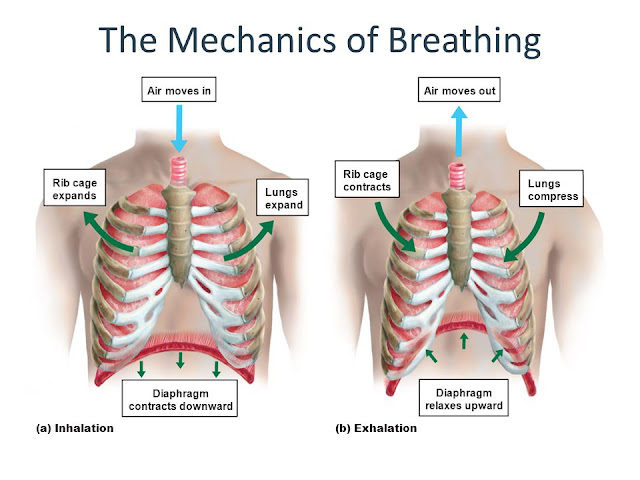The reason for the expansion of the lungs is the muscles, and as the chest cavity expands and contracts, the volume of the lungs decreases and increases. Whenever the length or thickness of the chest cavity increases or decreases, the volume of the lungs changes at the same time.
Mechanics of Pulmonary Ventilation
Normal breathing without movement is achieved by the diaphragm. The diaphragm contraction during tail pulls the lower surface of the lungs down. During exhalation, the relaxation of the diaphragm and the elasticity of the structures of the lungs, chest wall, and abdomen compress the lungs. • When you inhale strongly, the elasticity is weak and you cannot finish it quickly. The additional strength is mainly achieved through the contraction of the abdominal muscles which push the contents of the stomach against the diaphragm.
When you train and contract your chest, your lungs expand and contract. When the ribs are raised, the ribs almost protrude forward and the breastbone also moves forward and away from the spine, thickening the chest anteriorly and posteriorly.


It is what I was searching for is really informative.physio near me, It is a significant and useful article for us. Thankful to you for sharing an article like this.
ReplyDeleteExcellent job, this is great information which is shared by you. This info is meaningful and factual for us to increase our knowledge about it. about Stem Cell Treatment for Neck Pain Canada So please always keep sharing this type of information.
ReplyDeleteI normally want high-quality web content, and also this thing I found this in your post women's health clinic calgary. It is advantageous and considerable for us. Maintain sharing these types of posts, Thanks.
ReplyDeleteJoseph Henrich claims that a thousand years later, some unidentified early church fathers issued the proscription: "Don't marry your cousin!" It's unknown why they did this, but if Henrich is correct—and he builds a compelling case replete with evidence—then the prohibition changed the course of history by finally giving rise to nations and populations that were WEIRD: Western, educated, industrialized, wealthy, and democratic. According to the thesis advanced in this captivatingly written, superbly structured, and painstakingly researched book, this straightforward rule set off a chain reaction that resulted in states replacing tribes, science replacing mythology, and law replacing custom.
ReplyDeletetherapy near me